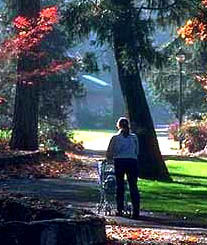Video: The Civilizing Nature of Plants.
This video is an Extension Engaged talk that Virginia Lohr
presented on April 9, 2004. View
on
RealPlayer - or - View
on
WindowsMedia
Summary: People have always known
that plants provide us food. This is essential for our
survival. Plants also provide fibers for clothing,
materials for buildings, and chemicals for medicines.
The value of these tangible products can be easily
appreciated. What is not so well known is that plants
also produce a wide range of intangible effects on
people. For example, plants calm us, reduce stress,
increase pain tolerance, and speed recovery from
illnesses. They also improve mental functioning in
children and reduce domestic violence. In short, plants
make us better, more civil people.
|
|



